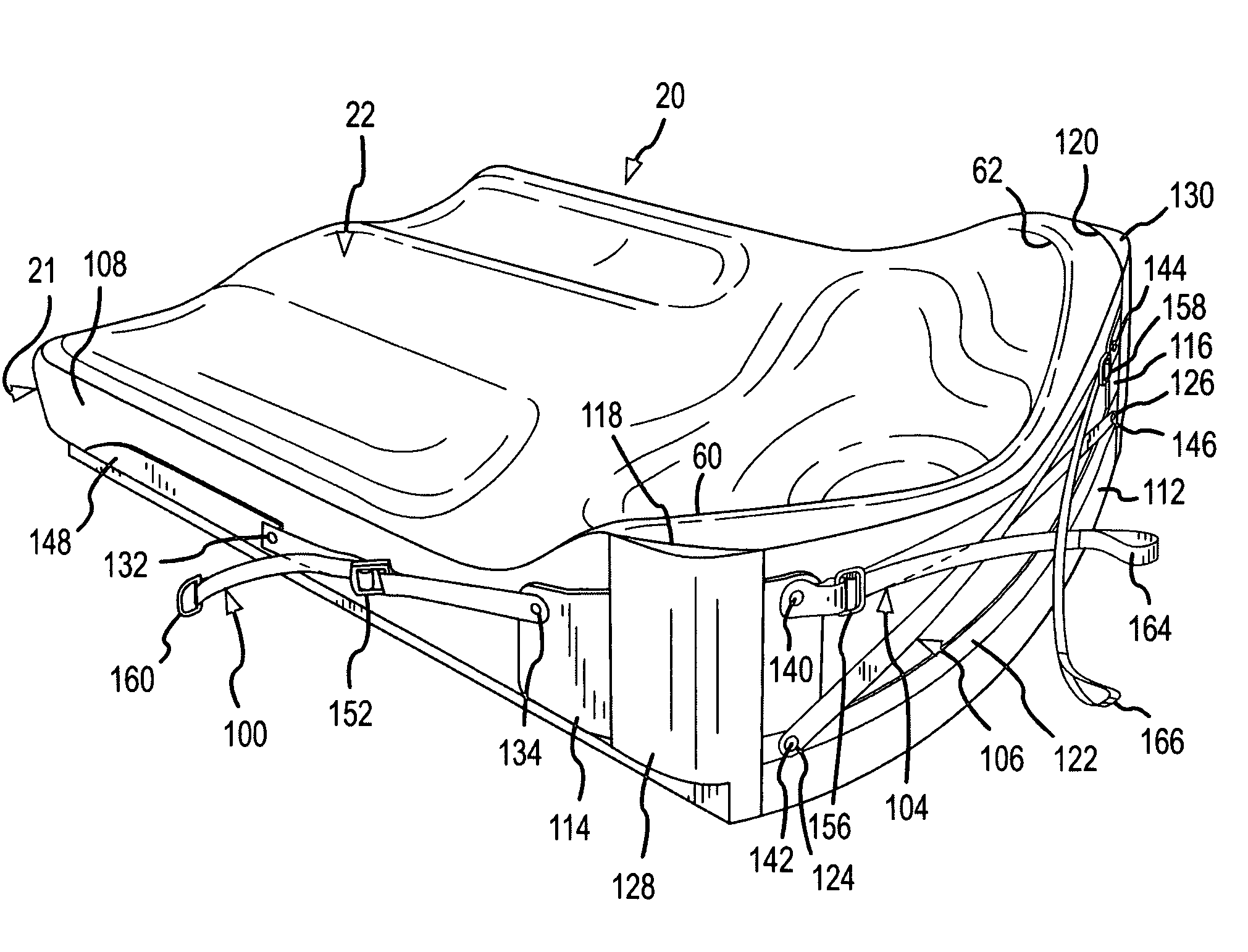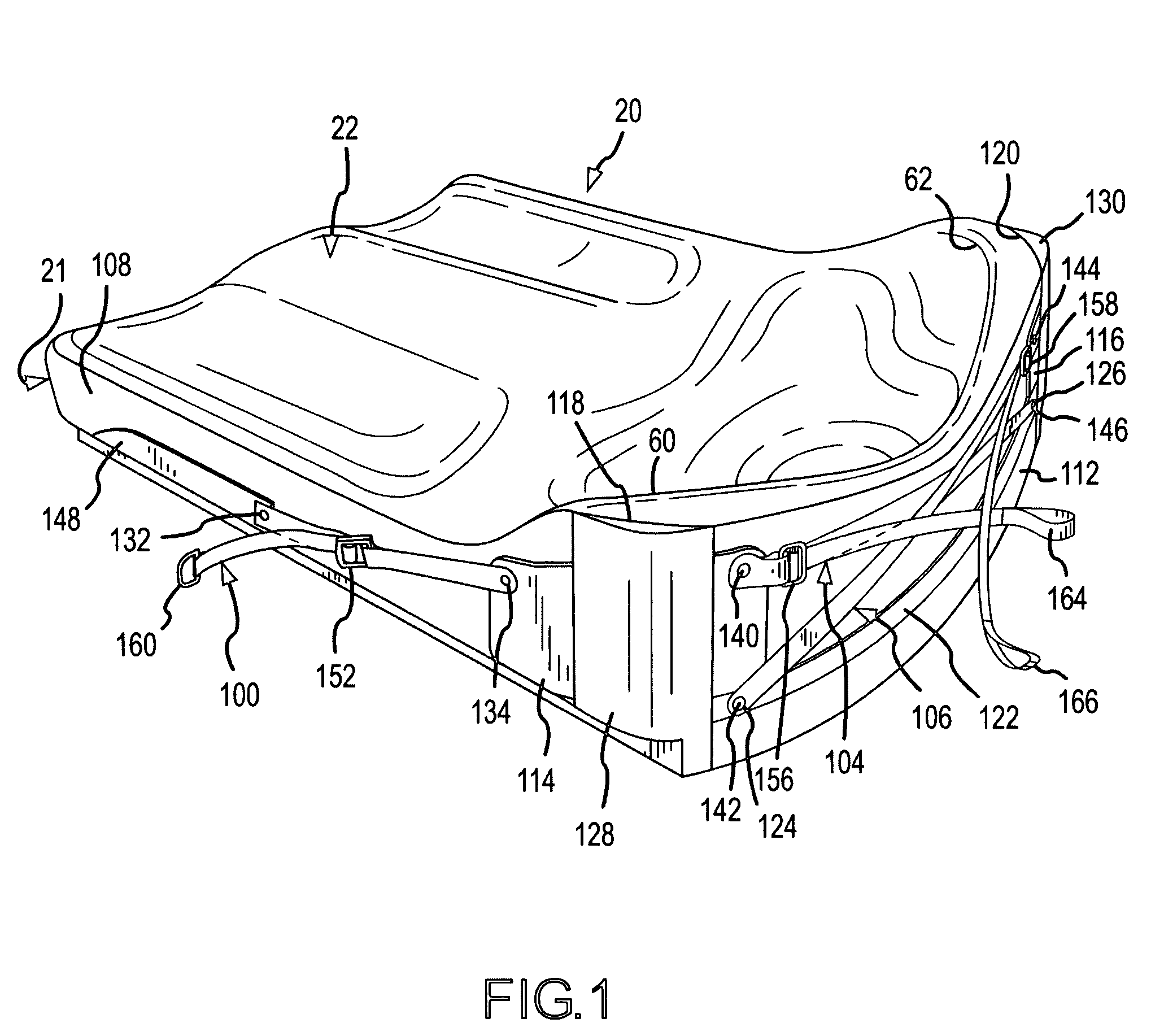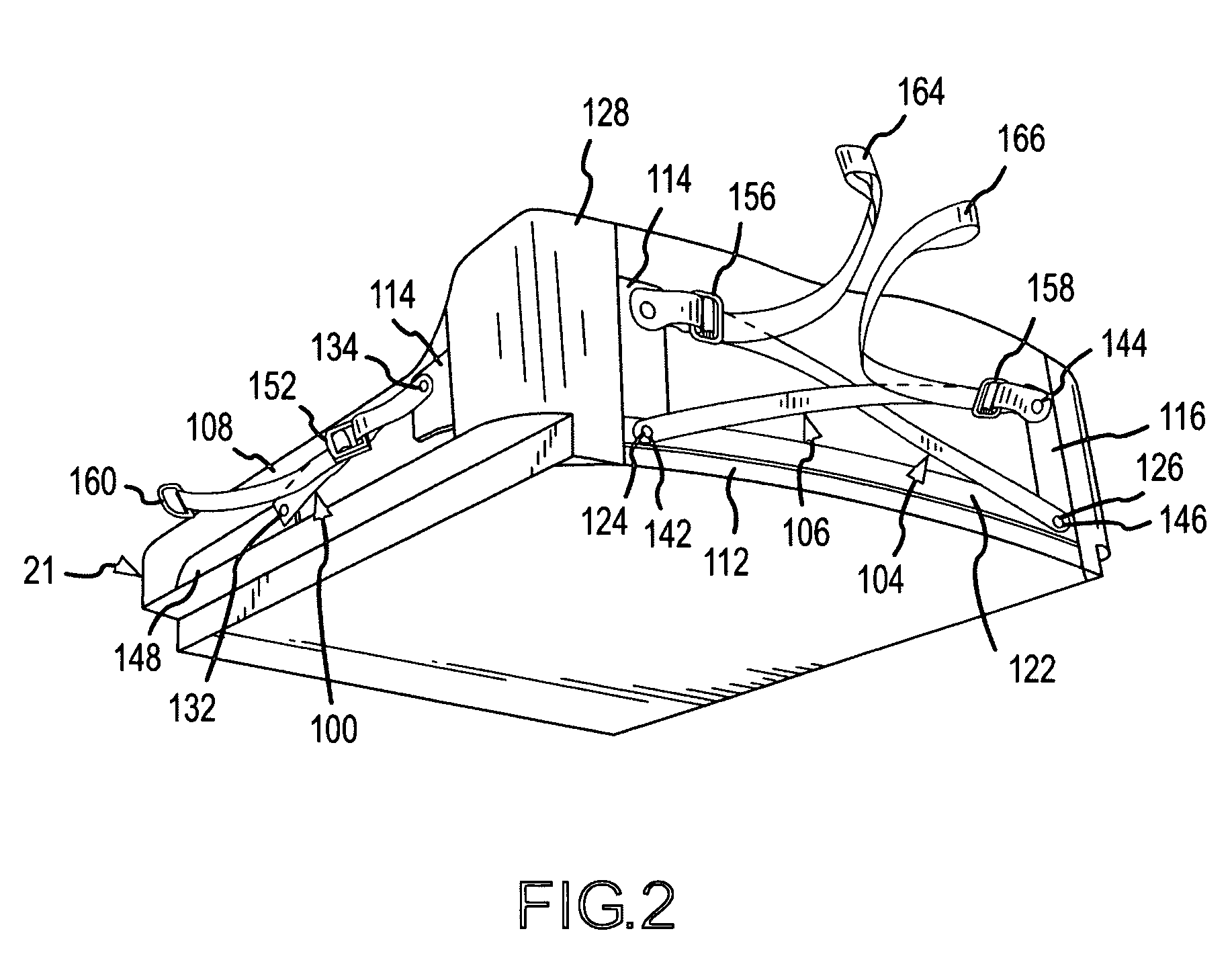Reinforced and adjustable contoured seat cushion and method of reinforcing and adjusting the contoured seat cushion
a contoured seat cushion, adjustable technology, applied in the field of seat cushions, can solve the problems of increasing the incidence of pressure ulcers, affecting the quality of the skin, and affecting the comfort of the seat, so as to reduce the risk of pressure ulcers, improve comfort, and support firm
- Summary
- Abstract
- Description
- Claims
- Application Information
AI Technical Summary
Benefits of technology
Problems solved by technology
Method used
Image
Examples
Embodiment Construction
[0048]A wheelchair seat cushion 20 which incorporates the present invention is shown in FIG. 1. The seat cushion 20 includes a resilient seat support structure 21 which is constructed of resilient plastic foam material that is capable of providing the necessary resilience and support to the wheelchair user. A support contour 22 is preferably constructed or otherwise molded as a part of the support structure 21. Preferably, the resilient plastic foam material from which the support structure 21 is formed is a matrix of polypropylene, polyurethane, polyethylene or other plastic beads which have been adhered together during a molding process in which the support contour 22 is formed simultaneously with the support structure 21, as described more completely in the above-referenced U.S. patent application Ser. No. 10 / 628,858.
[0049]As described in the above-referenced U.S. patent application Ser. No. 10 / 628,860, the support contour 22 is preferably configured in relation to the particular...
PUM
 Login to View More
Login to View More Abstract
Description
Claims
Application Information
 Login to View More
Login to View More - R&D
- Intellectual Property
- Life Sciences
- Materials
- Tech Scout
- Unparalleled Data Quality
- Higher Quality Content
- 60% Fewer Hallucinations
Browse by: Latest US Patents, China's latest patents, Technical Efficacy Thesaurus, Application Domain, Technology Topic, Popular Technical Reports.
© 2025 PatSnap. All rights reserved.Legal|Privacy policy|Modern Slavery Act Transparency Statement|Sitemap|About US| Contact US: help@patsnap.com



